Are you a proud owner of a car with luxurious leather seats? If so, you know that these seats require special care to maintain their beauty and longevity.
Leather is a natural material that is sensitive to UV rays and prone to cracking and fading if not properly cared for.
In this article, we will discuss the basic steps for cleaning leather car seats, how to remove stains, and tips for protecting them. Let's dive in and learn how to keep your leather car seats looking their best!
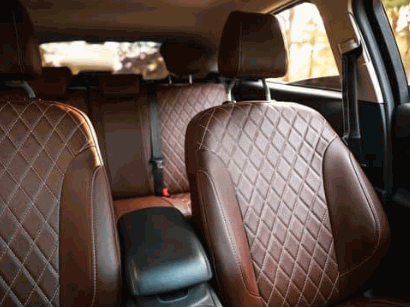
Contents
Leather car seats require special care due to being a natural material that is sensitive to UV rays, making them prone to cracking and fading over time.
Leather car seats are susceptible to damage from harsh weather conditions, spills, and scratches due to their delicate nature. The intense exposure to sunlight can lead to accelerated ageing, causing the leather to lose its lustre and suppleness. Regular conditioning, using specific leather cleaners and protectants, is crucial to maintain the integrity of the leather and prevent premature deterioration. It is recommended to avoid harsh chemicals that can strip away the natural oils and protective coating of the leather, leading to accelerated wear and tear.
Explore in-depth: How To Take Care Of Leather Sofa

The leather used in car seats is a natural material that offers luxurious comfort and durability. Its organic nature adds a touch of elegance to any vehicle's interior.
One of the significant advantages of opting for natural leather for car upholstery is its unmatched comfort, which enhances the driving experience and provides a sense of luxury. The durability of leather ensures longevity, resisting wear and tear better than synthetic materials. The aesthetic appeal of genuine leather elevates the overall look of the vehicle's cabin, creating a sophisticated and timeless ambience. The supple texture of leather adds a plush feel, making it a preferred choice for those seeking both style and functionality in their car's interior.
UV rays can damage leather car seats by causing discolouration and deterioration of the material over time. Proper cleaning and conditioning are essential to protect the leather from UV-related issues.
the leather seats with products specifically designed for leather care.
By removing dirt, dust, and debris, you can reduce the risk of UV-induced discolouration and deterioration. Conditioning the leather helps to maintain its flexibility and moisture balance, preventing it from becoming brittle or cracked due to UV exposure.
Leather car seats are susceptible to cracking and fading due to exposure to wear and tear, heat, and lack of maintenance. Regular care and conditioning can help prevent these issues and keep the leather in top condition.
Wear and tear, a common culprit in leather seat deterioration, occurs from constant use, friction, and UV exposure. The heat from the sun can accelerate this process, causing the leather to dry out and become brittle. Inadequate cleaning and conditioning can strip the leather of its natural oils, leading to premature cracking and fading. To maintain the longevity of your leather seats, it is essential to clean them regularly with a mild leather cleaner and apply a conditioner to keep them supple and protected.
Cleaning leather car seats involves several basic steps to maintain their pristine condition. These steps include vacuuming, wiping down with a damp cloth using a leather cleaner, and wiping off excess cleaner for a deep clean.
To begin the cleaning process, start by carefully vacuuming the seats to remove any loose dirt, debris, and dust accumulated on the surface. This step is crucial as it prepares the leather for further cleaning without spreading dirt around. Next, take a damp cloth and gently wipe down the seats to remove any surface grime or spills. Once you have wiped down the leather, choose a high-quality leather cleaner that is suitable for your car seat's material.
Apply the cleaner as per the product instructions, making sure to cover the entire surface of the seats. After allowing the cleaner to sit for the recommended time, use a fresh cloth to wipe off any excess cleaner and dirt residue for a thorough and effective cleansing process.
The first step in cleaning leather car seats is to hoover them thoroughly to remove any loose dirt, debris, or crumbs. This initial cleaning helps prepare the seats for further cleaning processes. Before starting the hoovering process, ensure you have the appropriate attachments for your hoover, such as a soft brush or upholstery tool.
Be gentle and avoid pressing too hard to prevent any damage to the leather surface during this step of the cleaning process.
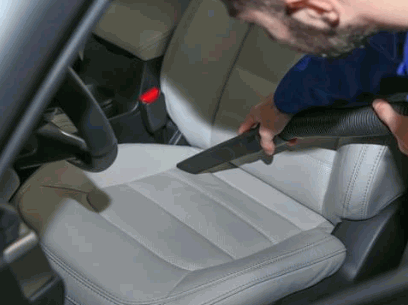
After hoovering, use a damp cloth to wipe down the leather surface gently. This step helps remove surface dust and prepares the seats for the application of a leather cleaner.
When using a damp cloth, make sure it is only slightly moist to avoid saturating the leather.
Always wipe in gentle, circular movements to prevent scratching the surface.
By being cautious in this process, you can effectively clean the leather without causing any harm to its texture or appearance.
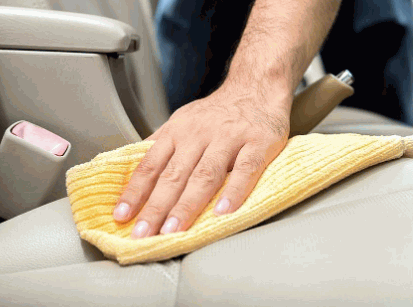
Once the seats are free of surface dirt, apply a leather cleaner following the manufacturer's directions for a deep clean. This step helps remove embedded dirt and grime from the leather upholstery.
When applying the leather cleaner, ensure to use a clean microfibre cloth or sponge to avoid scratching the leather surface. Work the cleaner into the seats in a gentle circular motion, allowing it to penetrate the pores of the leather for a thorough cleaning. Take care not to oversaturate the leather, as excessive moisture can cause damage. Once the cleaner has been applied, use a separate clean cloth to wipe off any excess product and residue, revealing a revitalised and rejuvenated leather finish.
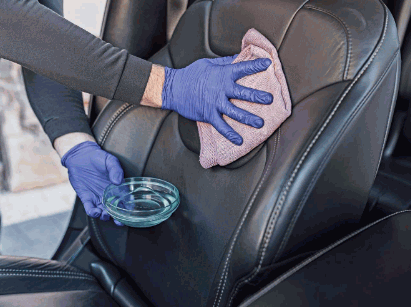
After applying the leather cleaner, wipe off any excess residue using a clean cloth or soft bristle brush.
This final step is crucial in maintaining the integrity and appearance of your leather car seats. By removing the excess cleaner, you prevent any buildup that could lead to a dull or sticky residue over time. The use of a soft bristle brush is particularly effective in reaching into the crevices of the leather, ensuring a thorough cleaning process. This gentle yet thorough method not only cleans the surface but also conditions the leather, keeping it supple and preventing cracks or fading.
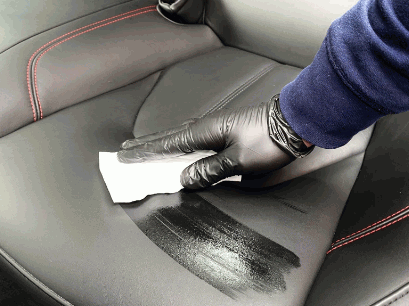
Ink stains on leather car seats can be challenging to remove. Use a mild cleaner and a microfiber cloth to dab the stain carefully without spreading it further.
Before dealing with the ink stain, test a small, inconspicuous area of the leather with the cleaner to ensure it doesn't cause damage. Gently spray the cleaner onto the cloth, not directly onto the leather, to control the application better.
If the ink stain persists, consider seeking professional help to avoid causing any further harm to the leather upholstery.
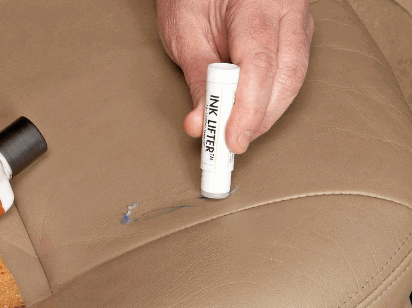
Grease or oil stains on leather car seats require immediate attention to prevent them from setting. Use a suitable cleaner and a soft bristle brush to gently lift the stain without damaging the leather surface.
It's essential to act quickly when dealing with grease or oil stains on leather car seats as time can make the removal process more challenging. Begin by blotting up any excess oil or grease with a clean cloth to prevent further penetration into the leather.
Next, apply a small amount of a specialised leather cleaner to a soft cloth and gently dab at the stain. Avoid rubbing vigorously, as this can worsen the situation by spreading the grease or oil further.
If the stain persists, consider using a mixture of mild soap and water to continue the cleaning process. Remember to test any cleaning solution on a hidden area of the leather first to ensure compatibility.
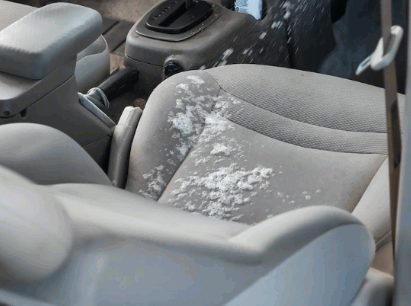
Food and drink stains on leather car seats can be stubborn. Use a liquid cleaner and a blotting technique to lift the stain gently without saturating the leather.
When dealing with these pesky stains, it's essential to act quickly to prevent them from settling into the leather. Remember that using excessive water can harm the leather, so opt for a specialised leather cleaner that is safe for such surfaces. To begin, apply a small amount of the cleaner onto a soft cloth or sponge and gently dab the stained area. Avoid rubbing vigorously, as this can cause the stain to spread. Let the cleaner sit for a few minutes to work its magic.
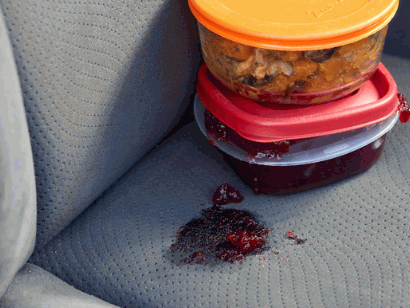
Removing blood stains from leather car seats requires caution to avoid spreading the stain. Follow specific cleaning directions and use appropriate products to address blood stains effectively.
When dealing with blood stains on leather surfaces, it is essential to act promptly to prevent the stain from setting. Always test any cleaning solution on a hidden area first to ensure it won't damage the leather. Use a gentle cleaning solution specifically formulated for leather to treat the stain. Blot the blood stain gently using a clean cloth, avoiding rubbing which can further embed the blood into the leather fibres. Repeat the cleaning process as necessary until the stain is no longer visible.
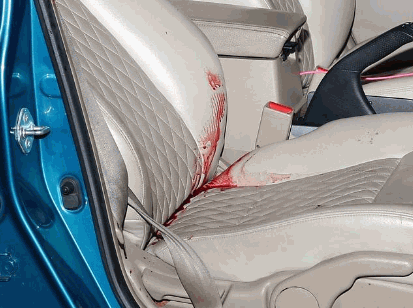
Protecting leather car seats involves using a leather conditioner, avoiding direct sunlight exposure, and considering the use of seat covers to maintain their quality and longevity.
Implementing these strategies can significantly prolong the lifespan of your leather seats. Leather conditioners not only help to moisturise and protect the leather but also prevent it from drying out and cracking over time. Minimising exposure to direct sunlight is crucial, as UV rays can cause fading and deteriorate the leather material. Using high-quality seat covers can act as a defense shield against spills, stains, and everyday wear and tear.
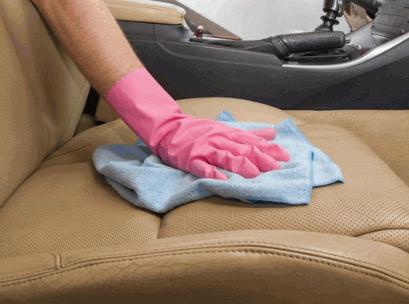
Applying a quality leather conditioner regularly can help protect and nourish the leather, keeping it soft and supple. This step is essential for maintaining the appearance and longevity of leather car seats.
By hydrating the material, a leather conditioner prevents the leather from drying out and cracking due to exposure to sunlight, heat, and regular wear and tear.
The conditioner acts as a protective barrier against spills, stains, and UV rays, thus safeguarding the seats from permanent damage.
Not only does this routine care enhance the aesthetic appeal of the interior, but it also ensures that the leather remains durable for a longer period, ultimately preserving the value of your vehicle.
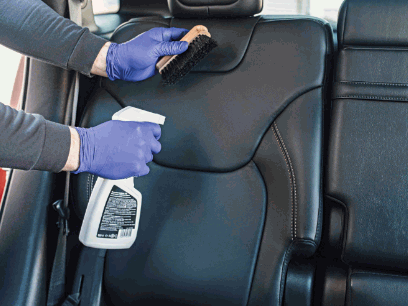
Direct sunlight exposure can accelerate leather deterioration and fading.
To protect leather car seats from these harmful effects, it is essential to take preventive measures. For example, parking the vehicle in shaded areas or using sunshades while parked can significantly reduce direct sunlight exposure. Investing in UV-protective leather conditioners can help create a barrier against the sun's damaging rays. Regularly applying these conditioners not only nourishes the leather but also acts as a shield, extending the lifespan of your car seats. By incorporating these simple practices into your routine, you can maintain the quality and appearance of your leather seats for years to come.
Utilising seat covers is an effective way to safeguard leather car seats from spills, stains, and general wear and tear. Seat covers offer an added layer of protection to preserve the original upholstery.
Not only do they shield the seats from accidental spills and stains, but they also help in maintaining the pristine condition of the leather surface. Seat covers act as a barrier against dirt, pet hair, and UV rays that can cause fading and cracking over time. They are easily removable and washable, making it convenient to keep your car interior looking fresh. Seat covers come in various designs and materials, allowing you to customise the look of your vehicle while extending the lifespan of your leather seats.
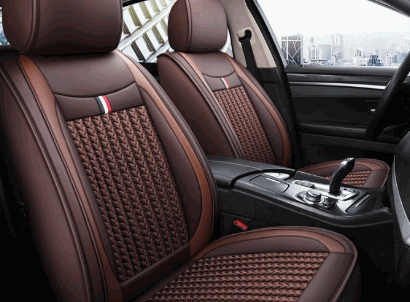
Preserving the beauty and longevity of leather car seats requires regular cleaning, conditioning, and protective measures. By following the right techniques and products, you can ensure that your leather car seats remain pristine and durable for years to come.
Proper cleaning involves removing dirt, dust and spills promptly to prevent staining and damage. Conditioning with high-quality leather conditioners helps to keep the leather supple and prevent drying out, cracking, or fading. Setting up a regular cleaning schedule using recommended cleaning products and applying protective coatings can significantly extend the lifespan of your leather car seats. Not only does this maintenance routine preserve the aesthetic appeal of your car's interior, but it also adds value to your vehicle in the long run.